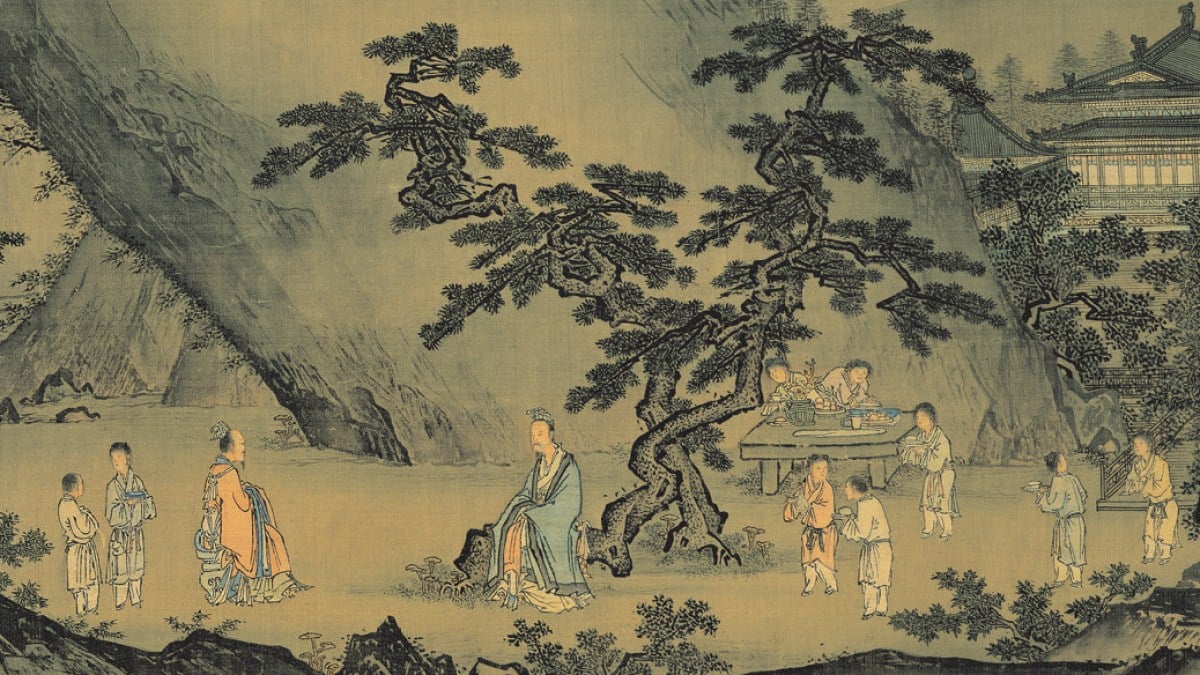
Art in ancient China was more than just an aesthetic pursuit; it was deeply intertwined with the country’s philosophies, spiritual beliefs, and social structures. From intricate calligraphy and painting to elaborate sculptures and pottery, each artistic expression carried significant meaning and reflected the values of different dynasties. The development of art in ancient China was shaped by Confucianism, Daoism, and Buddhism, each of which influenced artistic styles and themes.
The Role of Philosophy in Ancient Chinese Art
Art in ancient China was not created in isolation—it was a product of the prevailing philosophical ideologies. Confucianism, which emphasized respect for tradition, harmony, and social order, played a crucial role in shaping artistic expression. This influence is evident in paintings that depicted family, scholars, and scenes of daily life, often created with a strong sense of balance and order.
Daoism, on the other hand, encouraged a deep connection with nature, which is why landscapes became a dominant theme in Chinese paintings. The philosophy’s emphasis on spontaneity and the natural flow of life is reflected in brushwork techniques that appear effortless yet convey deep meaning.
Buddhism introduced spiritual and religious elements into art in ancient China, particularly in sculptures, murals, and paintings found in temples and caves. These artworks depicted Buddha, bodhisattvas, and other religious figures, often surrounded by symbolic elements representing enlightenment and wisdom.
Calligraphy as an Art Form
Calligraphy was one of the most revered art forms in ancient China, considered a direct reflection of a person’s character and intellect. Unlike in Western traditions, where writing was purely functional, Chinese calligraphy was an artistic expression that required discipline and mastery. The fluidity of brushstrokes, the balance of characters, and the spacing between words all contributed to its aesthetic appeal.
Confucian scholars placed great importance on calligraphy, believing that a well-written text demonstrated moral integrity. Daoist calligraphers, on the other hand, often embraced more free-flowing styles, allowing the ink to express movement and spontaneity. This duality in artistic expression highlighted the philosophical diversity within ancient Chinese society.
Traditional Chinese Painting
Painting was another prominent aspect of art in ancient China, with styles evolving over centuries. Early Chinese paintings often featured simple figures and minimal background details. However, as techniques developed, artists began creating detailed landscapes, animals, and scenes of everyday life.
Shan Shui painting, a style that focused on mountains and water, became especially popular during the Tang and Song dynasties. Influenced by Daoist philosophy, these paintings depicted the harmony between humanity and nature. Artists used varying ink tones and delicate brushstrokes to create depth and movement, making each painting a visual representation of the world’s natural rhythm.
Sculpture and Pottery in Ancient China
Sculpture was an essential part of religious and ceremonial practices in ancient China. Buddhist statues, temple carvings, and even tomb figurines played a significant role in conveying religious and social messages. The famous Terracotta Army, created for the tomb of China’s first emperor, Qin Shi Huang, is one of the most remarkable examples of large-scale sculpture in Chinese history. Each warrior figure in the army was uniquely crafted, showcasing the high level of artistry and attention to detail in ancient Chinese sculpture.
Pottery and ceramics also flourished as an art form, with techniques and styles evolving across dynasties. The production of porcelain, a highly valued ceramic, became one of the most distinguished crafts in ancient China. Beautifully designed vases, bowls, and figurines were often decorated with intricate patterns, reflecting cultural influences from different regions and periods.
Symbolism in Chinese Art
Symbolism was a fundamental aspect of art in ancient China, with certain motifs carrying deep cultural meanings. Dragons, for example, symbolized power, strength, and imperial authority, often appearing in paintings, sculptures, and ceramics. The phoenix represented rebirth and harmony, while lotus flowers were associated with purity and enlightenment, particularly in Buddhist art.
Animals also played an important role in artistic symbolism. The tiger represented bravery, the crane signified longevity, and the carp symbolized perseverance and success. These symbolic representations extended to architecture, textiles, and decorative arts, making symbolism an integral part of Chinese artistic tradition.
The Influence of Dynasties on Chinese Art
Each dynasty in ancient China contributed to the evolution of artistic styles and techniques. The Han Dynasty saw the rise of detailed ceramic figurines and silk paintings. The Tang Dynasty, often considered a golden age of Chinese culture, produced vibrant murals, elaborate Buddhist sculptures, and intricate calligraphy.
During the Song Dynasty, landscape painting reached its peak, with artists perfecting the use of ink washes and subtle shading. The Ming Dynasty, known for its refined porcelain craftsmanship, introduced vibrant colors and intricate designs in pottery. Each era left a distinct mark on the history of art in ancient China, showcasing a continuous evolution of artistic expression.
The Lasting Legacy of Ancient Chinese Art
The influence of art in ancient China extends far beyond its historical period. Many of the techniques and styles developed thousands of years ago continue to inspire contemporary artists. Calligraphy remains a respected art form, and traditional ink paintings are still practiced by artists who honor ancient techniques while incorporating modern influences.
Furthermore, museums and cultural institutions around the world preserve and showcase ancient Chinese artworks, allowing people to appreciate the rich artistic heritage of one of the world’s oldest civilizations. The philosophies embedded in ancient Chinese art—harmony, nature, spirituality, and discipline—continue to resonate with people today, proving that art in ancient China was not only a reflection of its time but also a lasting cultural legacy.
Conclusion
Art in ancient China was deeply rooted in philosophy, spirituality, and social values. Whether through calligraphy, painting, sculpture, or pottery, Chinese artists used their craft to express complex ideas and emotions. Each artistic creation carried cultural significance, reflecting the values of different dynasties and the beliefs of the people. The influence of art in ancient China continues to be felt today, demonstrating its enduring importance in the world of art and culture.





Leave a Reply